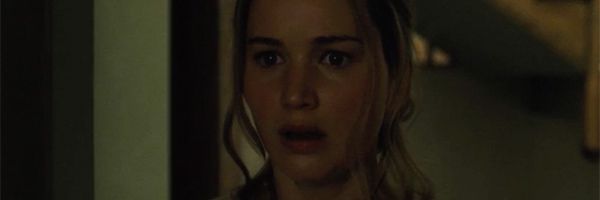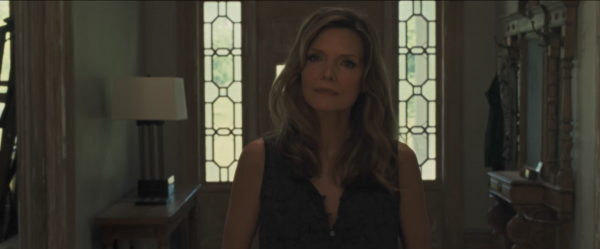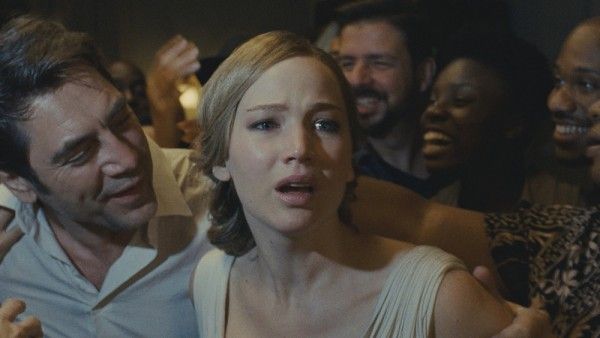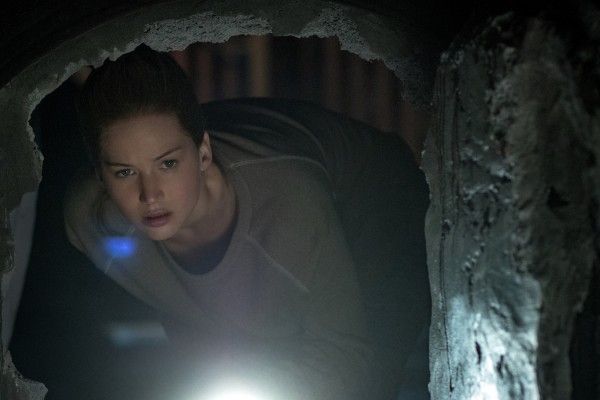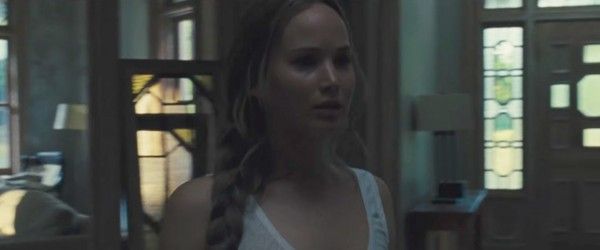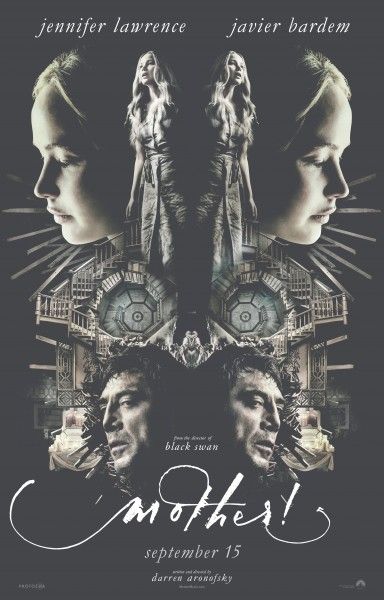[NOTE: This is a repost of our review from the Venice Film Festival; mother! enters limited release this Friday, September 15 and expands nationwide on September 22]
With mother!, Darren Aronofsky has made a very vulnerable film. At the very first screening of the film at the Venice Film Festival there seemed to be a competition from the audience for applause against boos and vice versa. And that’s a fitting response, since the film frequently turns an artist’s home into a carnival sideshow of visiting admirers who eventually turn into foes when they feel they’ve not received enough in return for the love they’ve given.
mother! is dressed up as a nightmarish fever dream but it’s truly about the creative processes of an artist, the unrelenting service of a muse, and the public which receives the work and feels like they’re owed more. And though it’s repetitious and perhaps thematically simple to unpack it’s surprisingly audacious for a studio film and intrinsically gutsy for Jennifer Lawrence. The Oscar-winner is frequently stonewalled, abused, and her most frequent expression is a mouth agape what-the-fuck? Those who applaud and those who boo are asking the same WTF question in different ways.
There are no names given to the characters in mother! just roles to be played. Javier Bardem is a poet who has written great works, then lost everything in a fire; he then finds a young woman who rebuilds that house and becomes his wife. Lawrence plays that woman, though we never really see them in love. He’s always wandering for inspiration in the idyllic surrounding wilderness while she puts his Victorian house back together. A stranger (Ed Harris) arrives looking for a Bed & Breakfast and the husband invites him to stay against his wife’s wishes. The stranger’s wife (Michelle Pfeiffer) arrives the next day and Lawrence’s desire to be alone so that she can work on the house while he writes is again thwarted. “All I’m trying to do is bring life into this house. Open the door to new people, new ideas,” he says, implying that the visitors could cure his writer’s block by listening to their stories, observing their behavior, perhaps even taking from them.
The two strangers speak of the poet’s obvious love of her but it isn’t evident through any interactions that we see; her beautiful presence in the house is all that’s required and her hard work is undervalued. The women seem tied to the home while the men are free to explore the grounds for stimulation and encouragement while Pfeiffer attempts to impart some sexual wisdom upon Lawrence. The new guests consistently disregard Lawrence while they bask in a fandom for the poet; her plea for them to leave after they break a precious object in Bardem’s studio not only goes unheeded but soon they’ve invited their sons over (Domhnall Gleeson and Brian Gleeson), too. A Cain & Abel scenario erupts and there’s a death in the house.
Previous to this brother’s quarrel, Aronofsky has carefully constructed a foreboding atmosphere of creaky floorboards, a wall-shaking fireplace, and a heartbeat in the walls. Following the murder in the house, Bardem allows the strangers to hold a wake in their home. More strangers arrive and Lawrence’s creation, the splendor of the house, is assaulted while Bardem’s poet receives adulation and inspiration from the visitors. This is staged like a home invasion for Lawrence that is not unlike Sam Peckinpah’s Straw Dogs. It’s a violent personal attack against her to have so many people disregard her control over her house—as if she’s invisible. Bardem allows them all to come because they admire him and inflate his ego.
It’s in these scenes that Aronofsky let’s us know that we are not viewing anything that is occurring within a known world and mother! starts to operate on nightmare logic. For instance, turning the corner can reveal something that’s shockingly out of place, something illogical can leap from the darkness. Your impulse would be to guess what—if anything—is truthful in this world, but it’s best to not get ahead of anything happening and just observe the madness. And buckle up because mother! gets mad, all right.
Once the poet receives the proper inspiration to write and publishes his latest work, the house soon becomes overrun with fans, whom increasingly want more and more in return for their love. They begin tearing apart the house and Lawrence gets pushed out even further until she’s essentially occupying what could only be described as the entire canvas of Hieronymus Bosch’s “The Last Judgment” (and Kristen Wiig is there!).
Although the idea of the film is perhaps a simple parable of an artist, the muse, and the public that starts to sound like a student’s conceit the more you think about it (including a few of the objects used for symbols), Aronofsky’s filmmaking capabilities far outshine his concept. His camera movement allows for constant surprises and the ease in which people fill the frame creates a beguiling atmosphere.
Aronofsky utilizes space with uncanny precision. And the flow of events operates like screwball comedy; a favorite sequence involves Lawrence waking up to say she’s pregnant and Bardem rushing off in the nude to feverishly write, handing her a piece of paper soon after that stands for his great new work, then receiving a phone call from his publisher while Lawrence's eyes are filled with tears. Once it’s been established that narrative rules don’t apply, mother! moves with a cyclical fluidity that mimics the compulsive desire for more, more, more. (Though I could have done with less CGI; the organic production values are fabulous, every computer generated bit took me out of this immaculate construction more than it should have.)
There are two halves to Aronofsky’s world that he’s building. Before the art is produced and once it goes out into the world. The first portion is very Ingmar Bergman-like, a suffocating chamber play with simpler dream machinations and a frightening world of unease. The second portion turns into outright chaos, a carnival ride of horrific human behavior. Lawrence’s house and her body are repeatedly put down so that his work can receive all the adulation.
I much prefer the chamber play portion, which has more subtle scares and observations of the relationship dynamic between an artist, their followers, and the distance in which they either push aside their true love in favor of public adulation. The second portion is sure go-for-broke and hellish, but it’s a little too outlandish, seemingly a parade of thoughts of now what’s the worst thing that could happen following another now what’s the worst thing that could happen?
Each section requires the same shocked look from Lawrence to everything that she’s witnessing. And as such, Aronofsky isn’t able to probe deeper into his characters, but instead only has the time for them to react to the frightening sights they’re seeing. And both Bardem and Lawrence essentially repeat the same stance over and over. For Lawrence it’s variations of “get out!” and for Bardem, it’s variations of “they really like my work!” Thus, the artist is an emotional vacuum who’ll allow everything and everyone around them to be destroyed so long as they’re receiving praise. And Lawrence is only visible to his public when they can use her as a punching bag for not receiving all that they want from him; celebrating her looks, then admonishing them, never asking her a question but asking everything of him. And this cycle will continue with each new work the artist creates in an attempt to continue to receive the warped adulation. Unless she's replaced by a new and younger woman who'll do the same.
mother! isn’t quite as fascinating as it thinks it is, and the hellish setting perhaps goes too far, but it is relentless and it sure is something that needs to be experienced. The camerawork and sound work alone is revelatory. Although mother!'s metaphors are very on-the-nose, it’s still extremely adventurous and is willingly open to both praise and snickers. What was fascinating, for me, was how the audience I saw it with reacted so primal, not too different from the freakish audience in the movie. I was surrounded by shrieks, yawns, laughter, smiles and a man who yelled “fuck you” at the screen as soon as the credits started. You’ll either get something you want from mother! or you’ll feel like you were robbed. You'll leave the theater spit out into the world with a spinning head and an itch to assemble the puzzle. And I think that’s pretty exciting for the current studio climate. Nothing is safe about mother! And that’s thrilling for an artist like Aronofsky.
Rating: B
mother! had its world premiere at the Venice Film Festival; it will be released in theaters on September 15, expanding September 22.

